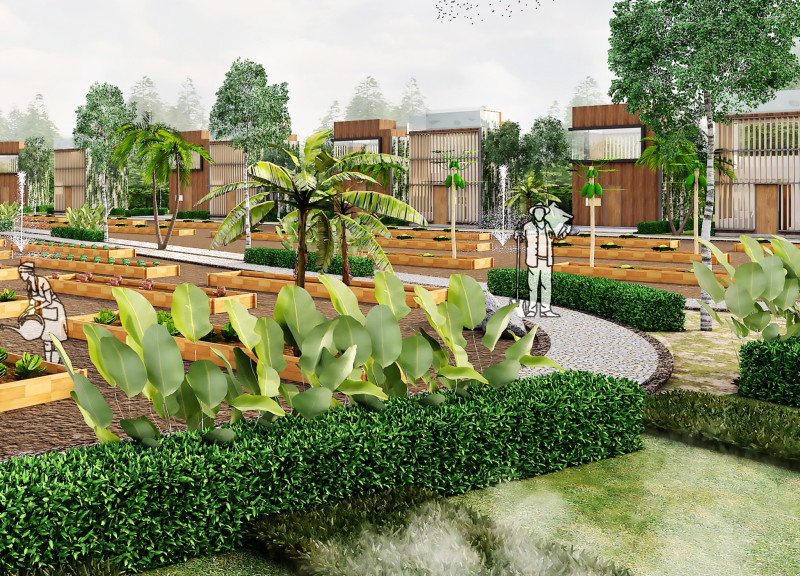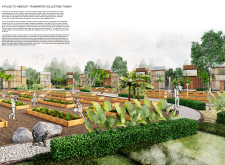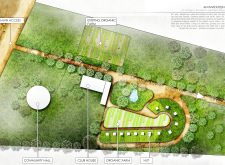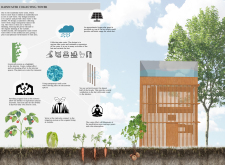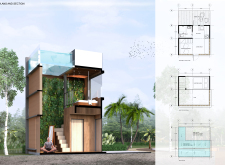5 key facts about this project
The Rainwater Collecting Tower is located in Cambodia, in an area rich with vineyards and organic farming. It serves as a retreat for travelers looking to escape the hustle of urban life while tackling the severe water challenges in the region. The design aims to create a strong bond with nature, integrating the use of resources into everyday living.
Architecture Concept
At the center of the design is the relationship between the natural environment and the built structure. The design includes a hut that combines spaces for private living and communal activities. This layout supports both individual reflection and community engagement, encouraging a self-sufficient lifestyle that connects visitors to the land.
Water Management
A standout feature is the rainwater collection system built into the roof. This system captures and stores rainwater for essential daily activities such as washing and irrigation for farming. By utilizing collected water, the project reduces reliance on outside sources, highlighting the importance of sustainability in water management.
Natural Ventilation
Natural ventilation plays a significant role in the design. Timber louvers on the facade allow fresh air to flow through while filtering sunlight. This setup enhances comfort within the space and encourages interaction with the outside world. Rainwater can enter the interior, providing a sensory connection to the elements.
Transparent Water Feature
The transparent water tank positioned atop the hut serves a dual function. It acts as a reservoir for the stored rainwater and offers views of the sky above. When filled, the tank becomes a calming feature that enhances the environment. This detail brings a sense of peace to the interior while contributing to the overall atmosphere of the living space.
The green wall system, featuring live plants nourished by rainwater, further enriches the habitation. This aspect not only supports local biodiversity but also promotes a sustainable way of living. It brings a piece of the landscape inside, reinforcing the connection between nature and daily life.


